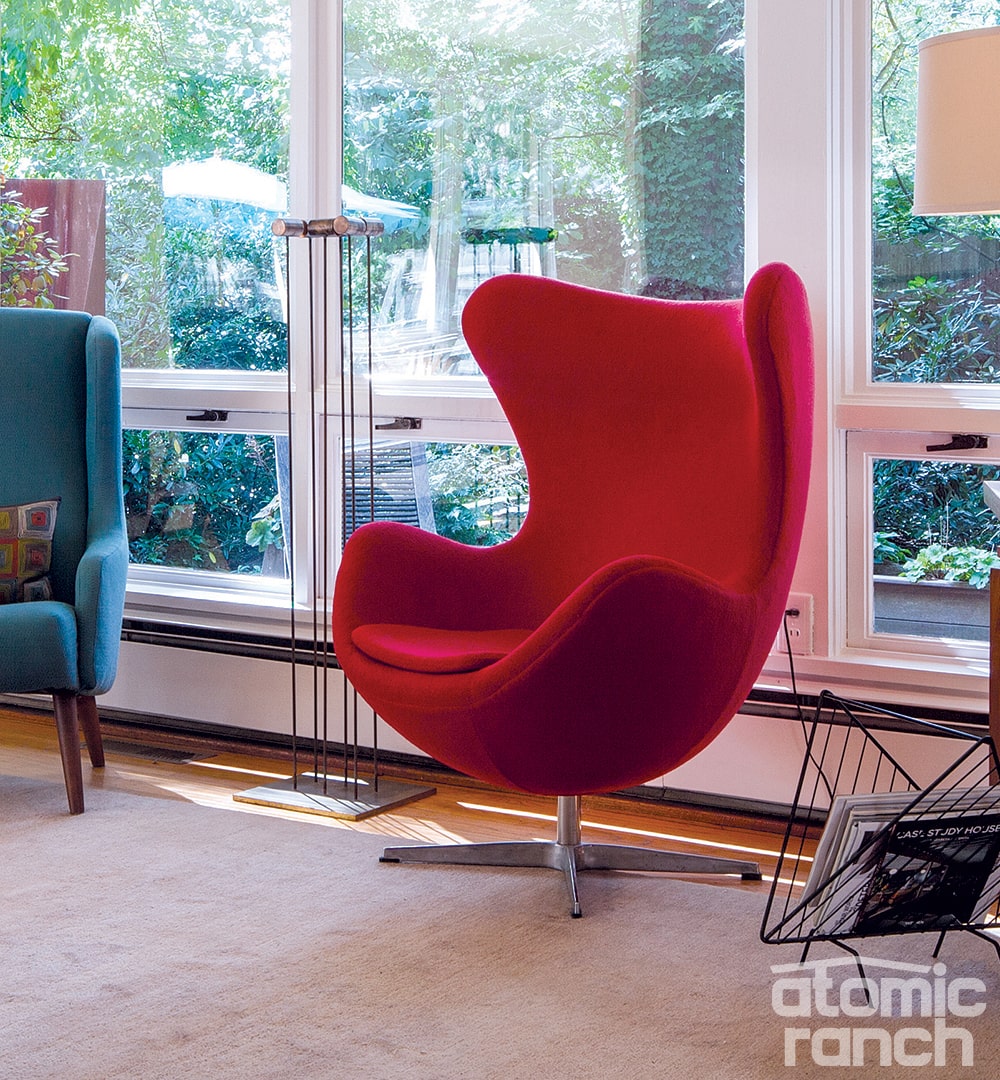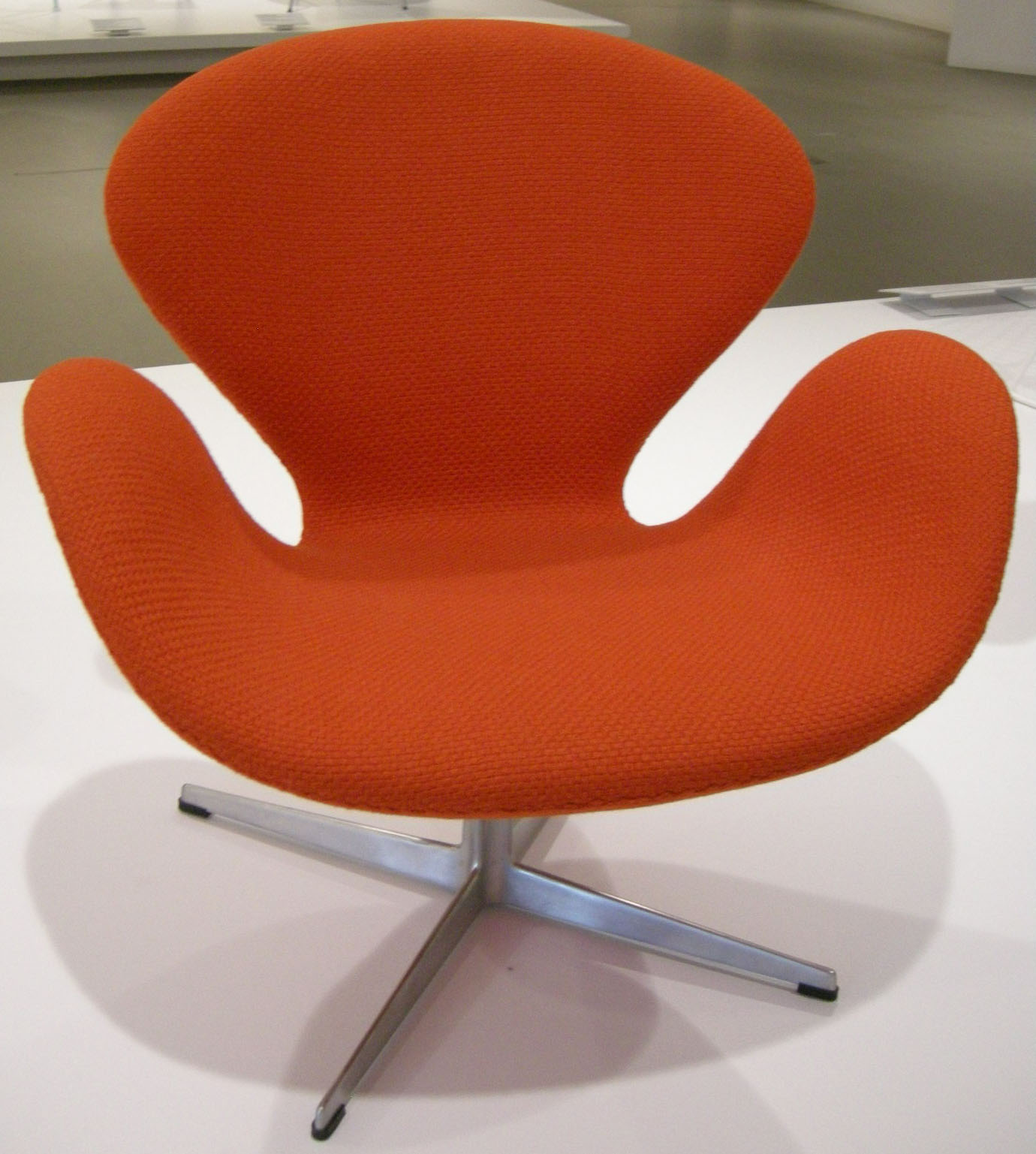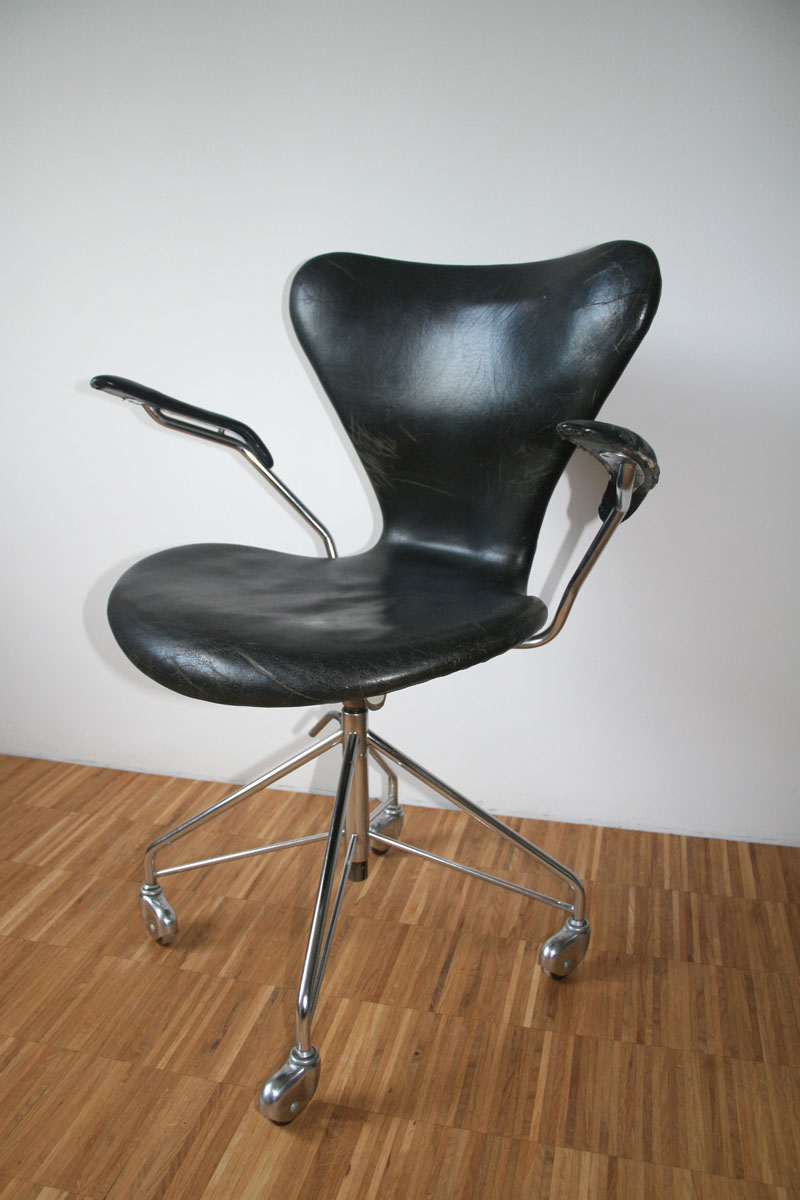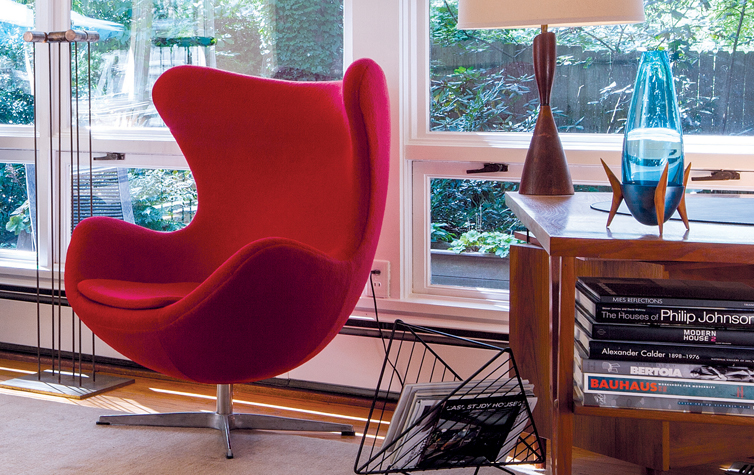
As a child, Arne Jacobsen painted the colored wallpaper in his family’s Victorian-style home white, according to a story shared by Republic of Fritz Hansen, a small rebellion that previewed the future architect and furniture designer’s preference for simplicity and functionality. Born in Copenhagen in 1902, Jacobsen wanted to be a painter but his father believed architecture to be a more sensible career choice so, after a stint as an apprentice bricklayer, the young man enrolled at the Royal Danish Academy of Fine Arts.
In school and throughout his career, Jacobsen’s designs ran the gamut from municipal buildings to office furnishings to cutlery. In 1951, inspired by an Eames design, Jacobsen created the armless, three-legged Ant chair, a stackable piece featuring tubular steel legs and a springy seat and back made from a continuous piece of plywood.
Jacobsen was commissioned as the lead architect of the Royal Hotel in Copenhagen. His work for this project also included furniture designs and it was here that he debuted some of his best-known pieces, including the Egg and Swan chairs.

The organically shaped Egg chair could be found in the lobby and reception areas of the hotel. The chair features a padded shell rested on a star-shaped aluminum base and offers users a bit of privacy inside its rounded form.
The Swan was also designed for the hotel’s lobby and lounge areas. It has a swivel base and a molded synthetic shell. Jacobsen also designed a Swan sofa.

Jacobsen’s Series 7 line features a range of chairs for a variety of markets, including home and office. Made of a slim shell featuring nine layers of veneer and two layer of cotton textile, the chair can adjust to the body’s contour and movements.
Jacobsen died in 1971. New versions of pieces including his Series 7 and Egg chairs are available from Fritz Hansen. Original designs can be found through resellers and auction sites.













